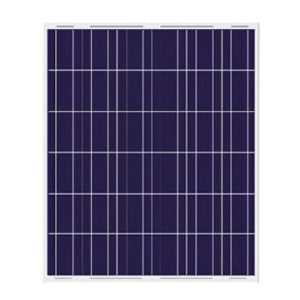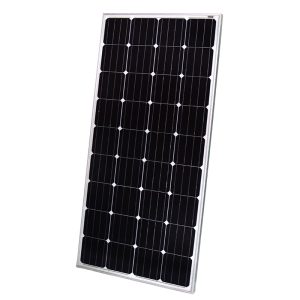The adoption of solar PV systems is rapidly increasing across the Philippines, driven by improved affordability and government incentives aimed at promoting renewable energy. For Filipino homeowners and businesses looking to go solar, 100-watt solar panels represent a popular mid-range capacity option, applicable for a wide range of uses, from powering households to off-grid cabins.
Overview of 100W Solar Panel Pricing
In the Philippine solar market, mono and polycrystalline 100W solar panels from reputable brands generally retail at prices ranging from PHP 5,000 to PHP 7,000 on average. When comparing panel manufacturers and models in this power range, key factors that influence pricing include panel efficiency, physical dimensions, warranty periods, and additional smart features.
On leading Philippine online marketplaces like Shopee and Lazada, popular 100W solar panel brands include PowMr, HE, Bioenno Power, and more. Reputable solar equipment suppliers such as Solar Exporters also offer 100W panels directly to consumers and solar installers.
When purchasing solar panels, buyers should always verify that products are certified to international standards, offer at least a 12-month warranty, and are supported by established manufacturers. High-quality solar PV equipment meeting these criteria is readily available from both Philippine and overseas suppliers.
What are 100-watt solar panels used for?
Thanks to their compact size and mid-range power output, 100W solar panels have emerged as a popular choice for a wide range of applications. In regions like Southeast Asia with year-round sunshine, 100W panels can generate 300 to 600 watt-hours of electricity per day.
Common uses of 100W solar panels include:
- Powering households & small appliances: In grid-connected homes, 3 to 5 x 100W panels can offset a portion of electricity usage, powering lights, fans, TVs, refrigerators, and more.
- Off-grid cabins & tiny homes: For remote cottages, 100W solar is ideal for providing basic electricity needs like lighting, device charging, and running a mini-fridge.
- RV & marine applications: On recreational vehicles, boats, and yachts, 100W panels can charge batteries to power appliances without noise or fumes from a generator.
- Solar kits: Portable 100W solar panel kits with charge controllers and inverters make solar accessible for outdoor activities like camping and hiking.
- Charging stations: As a solar-powered charging station, a 100W panel can simultaneously recharge multiple phones, tablets, and laptops quickly.
- Back-up power: Adding 100W solar provides resilience against grid power cuts for homes and businesses, keeping essential loads running.
With their versatility across household, commercial, and mobility applications, 100W solar panels deliver a balance of compact portability and sufficient electrical output for a wide range of solar use cases.
How Many 100-W Panels Are Needed to Power a Household?
The number of 100-watt solar panels needed to meet the electricity requirements of a household depends on several variables, including:
- Energy usage: homes with multiple air conditioners and large appliances will require a greater number of 100W panels.
- Available roof space: The physical area available to install a solar PV system impacts the total system size.
- Location/sun hours: Solar yield is higher in regions with more annual and daily sun exposure throughout the year.
- Use of batteries: Solar home systems with battery storage can leverage more self-consumed solar power compared to grid-tied systems without batteries.
As a general guideline for grid-connected solar homes in the Philippines without batteries:
- Small household: For a starter solar system running lights, fans, and a refrigerator, install 3 to 4 x 100W panels.
- Medium household: To offset around 30% of a medium household’s electricity usage, install 5 x 100W panels.
- Large household: For a large household with multiple air conditioners and appliances, install 6 to 8 x 100W panels.
These solar panel system sizes for Philippine homes are indicative only. An on-site analysis by a solar installer is recommended to appropriately size a solar system to a household’s unique load requirements.
Factors Impacting Total Solar PV System Costs
While 100W solar panels themselves retail for PHP 5,000 to PHP 7,000 in the Philippines, there are additional costs to consider when installing a complete solar PV system:
Solar Equipment
- Mounting structures
- Wiring and connectors
- Charge controllers
- Inverters
- Batteries (for off-grid systems)
System Design & Installation
- Site assessment & load calculation
- System design fees
- Physical installation labor
Permits & Government Fees
- Building permits
- Grid connection applications
- Metering fees
Ongoing Costs
- System maintenance & cleaning
- Inverter replacement
As a result, total installed costs for complete solar PV systems in Philippine homes range widely.
- Small solar home systems: PHP 150,000 to PHP 250,000
- Medium-sized solar systems: PHP 400,000 to PHP 600,000
- Large premium solar systems: PHP 800,000+
Grid-connected solar systems without battery backup are the most affordable option, avoiding the significant cost of solar batteries. However, batteries provide invaluable resilience against power outages.
Government incentives like net metering can help improve the return on investment for solar PV systems over the long term. Overall, while solar power represents a significant upfront investment, growing savings on electricity bills and rising utility rates make going solar financially attractive for Philippine homes and enterprises.



